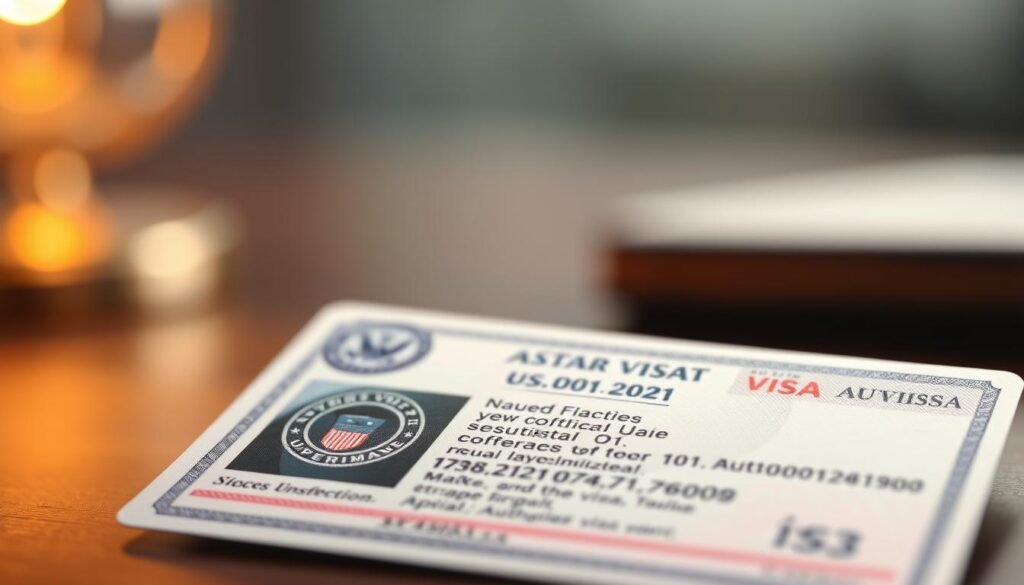
Get Best Paid Internships USA as an International Student

You’ve landed in a new city with one suitcase and a head full of plans. On day one you walk past a Hilton lobby, a startup billboard, and a sports office and think, “This is where I could grow my career.” That first morning sets the tone: the united states offers access to global brands and real-world experience.
Imagine turning a classroom skill into a real role that leads to a job offer. NACE reports about 52.7% of interns get full-time offers, so an internship can reshape your path fast.
This guide will map the visa routes (F‑1 with CPT/OPT and J‑1), taxes, housing tips, and where to search for meaningful opportunities. You’ll learn how to write a U.S.-ready resume and apply with confidence.
Ready for a practical next step? Start with a trusted resource on graduate placement and compliance, then plan applications that match your goals: graduate business placement guide.
- Why paid internships in the United States are a smart move right now
- Best paid internships USA international students can target today
- USEH International — business roles
- EA Ski & Snowboard Training — outdoor instructor pathways
- Spirit Cultural Exchange — sponsored placements
- Beyond Academy — New York programs
- Intern Abroad HQ — accounting and finance
- Boston University Washington, DC — credit-bearing summer
- The Intern Group — NYC summer programs
- Visa, compliance, and work authorization for international students
- Top U.S. cities with abundant internship opportunities
- New York City — Global hub for finance, media, and management
- Los Angeles — Entertainment capital with hospitality and culinary roles
- Washington, DC — Politics, public policy, and legal internships
- Chicago — Global companies, nonprofits, and premium hotels
- San Francisco — Tech and startups near Silicon Valley
- In‑demand industries for international interns
- Where to find internships: platforms, programs, and university resources
- How to apply with confidence: from action plan to follow‑up
- Paid vs unpaid internships and externships: choosing what’s right for you
- A smarter search process: timing, authenticity, and networking
- Interview preparation that helps you stand out
- Logistics you can’t skip: housing, taxes, and day‑one expectations
- Your next step to a U.S. internship that accelerates your career
Why paid internships in the United States are a smart move right now
Securing a paid role while you study gives you hands-on experience and a clearer path to full-time work. Paid internships offer income, heavier responsibilities, and stronger outcomes than unpaid roles.
Real results matter: NACE reports that
52.7% of interns receive full-time job offers
after their internship. That statistic means your chances of landing a job rise when you complete a quality program in the united states.
Campus career services add another layer of support. Resume clinics, mock interviews, and employer mixers connect you to hiring programs and real opportunities.
- You gain practical experience that complements coursework and builds your portfolio.
- You learn workplace norms communication, teamwork, and project ownership that employers expect.
- You form references and mentors who can vouch for your performance during future hires.
The pay also eases living costs so you can focus on performance instead of juggling multiple roles. Taken together, these factors give you a clear advantage as you start your career.

Best paid internships USA international students can target today
Focus your search on programs and organizations that pair clear learning goals with real supervision. Below are vetted options that match common fields and visa needs. Each entry notes what you’ll actually do and the type of support provided.

USEH International — business roles
Sales, marketing, HR, and finance placements. USEH matches candidates to roles that emphasize mentorship and measurable learning outcomes. Choose these if you want structured tasks and supervisor feedback that build your resume and experience.
EA Ski & Snowboard Training — outdoor instructor pathways
Train on U.S. slopes, then teach and earn while you work. This option turns a sports skill into customer-facing experience and seasonal income.
Spirit Cultural Exchange — sponsored placements
Spirit sponsors J‑1 visas and places interns in STEM, arts, communications, and hospitality. Use this if you need sponsor support from an experienced organization.
Beyond Academy — New York programs
Flexible start dates across media, tech, finance, and creative roles. Good for quick starts in a city with many hiring companies and networking events.
Intern Abroad HQ — accounting and finance
Combines internships with workshops, site visits, and leadership meetings to strengthen your professional network and practical skills.
Boston University Washington, DC — credit-bearing summer
Blend coursework with a professional placement for academic credit—ideal if you want structured learning plus DC exposure.
The Intern Group — NYC summer programs
Curated summer internships across fashion, media, finance, and art with employer networks and on-site support.
- Prioritize programs that help with CPT/OPT or J‑1 paperwork and list clear responsibilities.
- Ask companies about training, project scope, and performance reviews before you accept an offer.
- Compare benefits like housing, orientation, and networking to judge total value for your career and budget.
"Choose placements that offer mentorship, measurable goals, and a path to longer-term work."
Before you accept any role, get clear on visa rules, work authorization, and how to stay compliant while you gain experience.
F‑1 and CPT: After your first academic year you may qualify for CPT when the internship is integral to your degree. Your DSO must endorse a new I‑20 showing the CPT authorization before you start.
OPT pathways
Pre‑completion OPT limits you to about 20 hours per week during class and full time on breaks. Post‑completion OPT gives up to 12 months of full-time employment with USCIS approval. If you qualify for a STEM extension, you can request an extra 24 months.
J‑1 options
J‑1 exchange routes include Intern and Trainee placements and Academic Training (AT). AT often runs up to 18 months, with some fields allowed longer. These options require sponsor-issued DS‑2019 forms and active SEVIS compliance.
Staying compliant
- Follow part‑time caps during terms and avoid starting before authorization.
- Keep offer letters, training plans, and I‑20 or DS‑2019 documents handy.
- Even unpaid interns must file U.S. taxes—tools like Sprintax simplify tax filing.
Tip: Choose employers and campus offices that know CPT/OPT or J‑1 rules to speed the application and onboarding process.

"Confirm hours and authorization before you begin so your status stays secure."
Top U.S. cities with abundant internship opportunities
Where you live during your internship shapes the kinds of companies, mentors, and networks you find.
New York City — Global hub for finance, media, and management
New York City remains a powerhouse for finance, marketing, media, and management.
Tap into networking events and large alumni communities across boroughs to meet hiring teams and boost your career.
Los Angeles — Entertainment capital with hospitality and culinary roles
Los Angeles offers roles tied to studios, streaming platforms, hospitality groups, and culinary incubators.
These positions give fast, creative experience and chances to work with household-name companies in media and food service.
Washington, DC — Politics, public policy, and legal internships
Washington, DC is ideal for think tanks, government offices, embassies, and policy NGOs.
You’ll gain unique exposure to how policy shapes markets and public life in the united states.
Chicago blends Fortune 500 firms, mission-driven nonprofits, and high-end hotels with strong mentorship cultures.
That mix is useful if you want structured roles and a clear path to long-term hiring.
San Francisco — Tech and startups near Silicon Valley
San Francisco and the Bay Area connect you to startups and major tech firms like Google and Adobe.
Product, data, and agile team internships accelerate hands-on learning in fast-moving companies.
- Consider commute, cost of living, and whether housing is included before you accept an offer.
- Shortlist cities that match your industry focus to maximize role relevance and post-internship outcomes.
- Ask companies about hybrid or on-site expectations so your schedule aligns with visa and academic timelines.
- Join meetups and alumni groups to expand your local support network and multiply hiring introductions.
"Shortlist cities that match your industry focus your location is part of your strategy."
In‑demand industries for international interns
Different sectors prioritize hands‑on work and soft skills, so choose fields that match your strengths.
- Business: Finance, management, and marketing roles give you analysis and client‑facing experience. Pair course projects with on‑the‑job reporting tasks to show measurable results.
- Media: Sports media, newsrooms, and film/TV production build storytelling and content operations skills. These roles sharpen deadlines and teamwork.
- Hospitality: Major hotel chains teach property operations and guest experience standards that translate to many companies worldwide.
- Politics & public policy: Intern in policy research, constituent services, or legislative offices to learn governance and advocacy work.
- Culinary arts: High‑volume kitchens train you in fast paced service, menu execution, and food safety valuable for culinary careers.
- Technology: Product, data, and software internships from startups to large firms offer either broad exposure or deep functional training.
- Choose an industry tied to your field to protect visa alignment and improve hireability after graduation.
- Seek training plans with measurable outcomes so you can document new skills on your resume.
- Ask each company how interns contribute to team goals meaningful work signals a stronger learning environment.
- Compare industry norms for paid vs unpaid roles and competition levels to plan your search realistically.
"Target industries that give you structured training and clear experience those outcomes matter most to future employers."
For a concrete role example and detailed posting, review this global security design listing at Disney as a model of structured internship work: global security design internship.
Where to find internships: platforms, programs, and university resources
Start your search where major employers and campus offices post often. These channels connect you to roles, sponsor programs, and visa-aware hiring managers.
LinkedIn, Internships.com, and Indeed
- LinkedIn is a top professional network for recruiter outreach and alumni referrals.
- Internships.com lists millions of openings and has filters for field, location, and pay.
- Indeed aggregates broad postings set alerts to catch new internship opportunities quickly.
Cultural Vistas and U.S. government exchange programs
Explore Cultural Vistas and U.S. exchange routes like Fulbright or IVLP when you need sponsor-backed training or research.
These programs offer structured placements and clear compliance support for your visa timeline.
University career services, Handshake, and Extern
Activate your university career center and Handshake to access campus-connected openings and fairs.
Consider Extern for short remote externships with name-brand organizations that boost your portfolio.
- Verify visa-savvy employers in postings to streamline authorization.
- Book time with your university career team for resume reviews and mock interviews.
- Track applications in a spreadsheet and follow company pages to spot leads early.
"Use a mix of platform resources and campus support to widen your search and protect your visa status."
How to apply with confidence: from action plan to follow‑up
Create a focused roadmap that links your career goals to application dates, role types, and authorization milestones. A clear plan helps you target the right roles and avoid last‑minute surprises with visa timing.
Map your career action plan. Connect your field, target job titles, and program or company timelines so you know when to submit each application.
Create a U.S.‑ready resume
Draft a one‑page resume with results‑focused bullets. Omit photos and personal details common outside the United States. Mirror keywords from the posting so your document passes quick scans.
Write focused cover letters
Address a specific hiring manager when possible. Match your experience to listed responsibilities and close with a polite, enthusiastic statement about next steps.
Follow up and track every step
Keep a tracking sheet with dates, contacts, and requirements. Submit complete packets early and follow up after about two weeks if the posting allows contact.
- Build a portfolio or GitHub/Notion case studies if your field benefits from work samples.
- Rehearse a short narrative about your background and visa status so you answer eligibility questions clearly.
- Ask your university career center for resume reviews and mock interviews.
Tip: Treat each application as a small research project tailor materials, confirm requirements, and record outcomes to improve your next submission.
For role examples and additional coaching, check targeted listings like AI video prompt roles and consider career coaching when you need extra support.
Paid vs unpaid internships and externships: choosing what’s right for you
Deciding between a paid role or unpaid experience starts with one question: what will you actually learn and document?
Paid roles usually come with clearer responsibilities, measurable deliverables, and stronger chances of full‑time employment after the placement. If you can secure a paid position, it often means more mentorship and formal evaluation.
Unpaid options can still be strategic. Use them to explore a new field, earn academic credit, or gain experience when paid roles are scarce. Externships are short, unpaid shadowing chances usually a day to a few weeks good for quick exposure.
- Confirm the role fits your visa rules, hours, and dates before you accept.
- Ask about training plans, supervision, and evaluation hese matter more than pay alone.
- Clarify credit options and how that affects your course load and fees.
- Budget for unpaid work and document accomplishments for future interviews.
- Verify the host understands hiring and compliance for international hires and file taxes correctly, even for unpaid work.
"Choose roles that give clear learning outcomes and supervision those signals drive long‑term career value."
For some remote media roles and part‑time listings you can review options like the work-from-home media roles.
A smarter search process: timing, authenticity, and networking
Start your search with a clear timeline so you can meet application windows and visa deadlines without last‑minute stress.
Apply early to beat deadlines, schedule interviews, and leave time for CPT, OPT, or J‑1 paperwork. Seek reputable, visa‑savvy organizations and ask about their experience with hiring people who need authorization.
Use professors, mentors, and alumni for warm introductions. Referrals often fast‑track interviews and reveal hidden opportunities.
- Set a weekly cadence: source roles, customize your resume, apply, and follow up.
- Attend career fairs, hackathons, and conferences to build real‑time networking and meet hiring teams.
- Research target companies and reference recent news or product updates in your outreach.
- Track every touchpoint in a spreadsheet to nurture relationships over time.
- Share short LinkedIn updates on projects or certificates to show steady growth.
- Practice a 30‑second intro that states your skills, interests, and work authorization clearly.
"Apply early, lean on your mentors, and keep a consistent outreach routine those moves open more opportunities."
Interview preparation that helps you stand out
You’ll likely face a phone screen first and then one or more interviews. Use that order to structure your prep: practice short answers for the phone screen, then expand examples for later rounds.
Start with mock interviews to rehearse your story and calm nerves. Record yourself and refine pacing, tone, and clarity.
Practice answers, research companies, and prepare insightful questions
Research each company’s products, roadmap, and culture so your questions show real interest. Prepare accomplishment-driven responses using the STAR framework to demonstrate impact.
- Have 6–8 behavioral stories ready that show teamwork, problem-solving, and ownership.
- Clarify your visa status succinctly and proactively if asked, focusing on the authorization you will use.
- If given a task or case, state assumptions, manage time, and present structured conclusions.
Polish professional communication and English for your field
Practice field-specific vocabulary so your answers sound confident and precise. Expect behavioral questions and rehearse concise, result-focused responses.
- Set up a quiet, well-lit space for virtual interviews with clear audio and a neutral background.
- Dress professionally for onsite visits and match the company’s culture when possible.
- Send a thoughtful thank-you note after each interview that recaps fit and enthusiasm.
Tip: Ask about training, mentorship, and evaluation to learn how the internship will grow your skills and prepare you for future job roles.
Logistics you can’t skip: housing, taxes, and day‑one expectations
Plan the practical steps now so your move, commute, and paperwork don’t derail the learning you came for.
Many internship offers don’t include housing. Look into homestays, dorms, or shared apartments early. Compare cost, commute time, and neighborhood safety. Verify your lease start date against the program start.
Bring these documents on day one: passport, I‑20 or DS‑2019, I‑94, and your offer letter. Also have any university approvals ready so HR can confirm authorization.
Complete HR forms promptly (I‑9, tax forms, direct deposit) so your first paycheck arrives on time. Even unpaid roles require tax filing; Sprintax is a common option to simplify filings for international students.
- Secure housing early; check commute and safety before signing.
- Budget for deposits, utilities, and transit so you can focus on work and learning.
- Prepare day‑one docs: passport, I‑20/DS‑2019, I‑94, and offer letter.
- Finish HR paperwork fast: I‑9, tax forms, and direct deposit.
- Learn team tools (Slack, standups) and set first‑week goals with your manager.
"Confirm your schedule with your manager and align hours with visa limits to protect your status."
| Housing Type | Typical Monthly Cost | Pros | Cons |
|---|---|---|---|
| Homestay | $700–$1,200 | Supportive host, short-term option | Less privacy, variable commute |
| Dorm / University | $500–$1,000 | Close to campus, university support | Limited availability, academic rules |
| Shared Apartment | $600–$1,500 | Cost split, more independence | Need roommate vetting, deposits |
| Private Studio | $1,200–$2,500+ | Full privacy, flexible lease | Highest cost, utilities extra |
Your next step to a U.S. internship that accelerates your career
Start by matching a city and industry to create a practical application schedule.
Pick two or three target roles and build a 30-day plan. Prioritize sponsor-ready programs and reputable companies that understand CPT/OPT or J‑1 exchange rules.
Schedule a career center visit this week for resume edits and mock interviews. Line up references who can vouch for your skills. Apply early and mix stretch and solid-fit applications to widen your opportunities.
Track outcomes weekly, practice interviews, and update your portfolio. Once you accept an offer, confirm start date, hours, pay, and required documents well in advance. Use OPT post-completion (up to 12 months; STEM extension adds more) to turn your internship into a longer-term career advantage.
If you want to know other articles similar to Get Best Paid Internships USA as an International Student you can visit the category Careers.






Leave a Reply